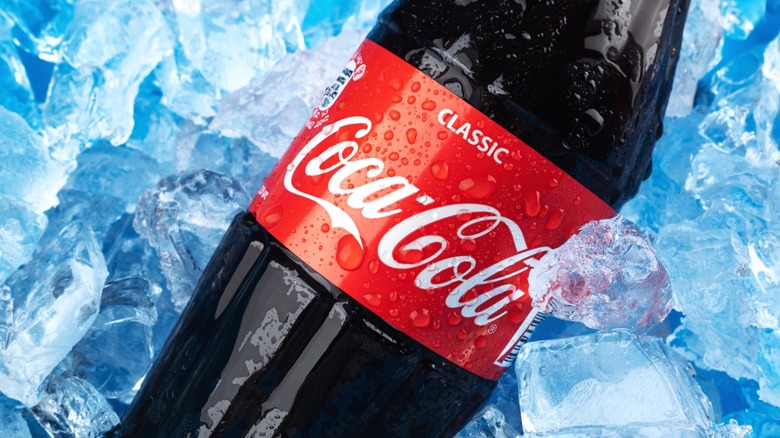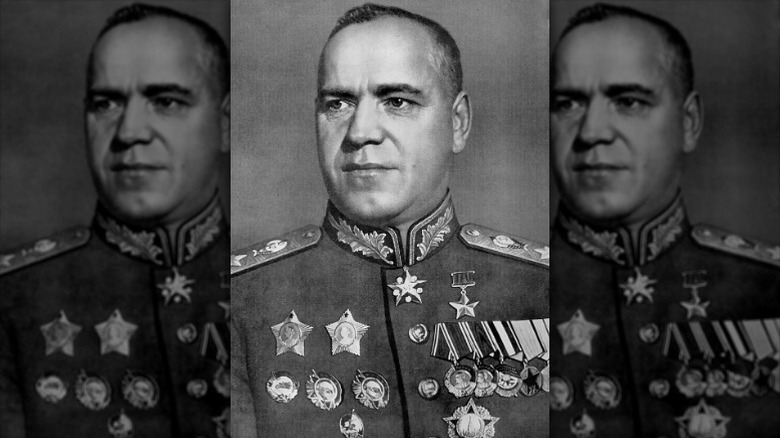How Coca-Cola Helped A High-Ranking Soviet Get His Soda Fix In The USSR
You may or may not have heard of Georgy Zhukov, who served as the highest-ranking officer in the Russian military as Marshal of the Soviet Union for 14 years and was considered a hero of World War II, leading the Red Army to several crucial victories over the invading Germans. He also provided support to Nikita Khruschev during his rise to power after the death of Joseph Stalin. But for the purpose of this story, all you need to know is that he was a powerful Soviet who really, really liked Coca-Cola — enough that the U.S. secretly gave him disguised bottles he could safely drink behind the Iron Curtain. (The Nazis, meanwhile, settled for Fanta.)
The Soviet Union was not a good place to be if you liked Coca-Cola. After World War II, America and the Soviet Union fell into a bitter Cold War: the world was divided into spheres of influence, nuclear armageddon hung over everyone's head, and the "Iron Curtain" isolated the Soviet Union from the West. Coca-Cola, meanwhile, was practically synonymous with the West, and as such was banned. But Zhukov had acquired a taste for the stuff after sharing some with fellow Coke lover Dwight D. Eisenhower after the war, and although he didn't want to tick off the Politburo by drinking contraband, he had a powerful craving.
The US provided Zhukov with white Coke he could pass off as vodka
In 1946, Zhukov had an idea. Would it be possible, he asked U.S. General Mark D. Clark, for Coca-Cola to be made clear rather than brown? That way, others would mistake it for vodka, and he could happily drink his carbonated sugar water without Stalin throwing him in the gulag. Clark sent the request through the appropriate channels, and a chemist who worked for Coca-Cola was able to develop a version of the drink that had the same great taste without the caramel that gave it its distinct dark color. (Thus, they managed to beat Crystal Pepsi and other transparent drinks to the punch by several decades.)
To further complete the illusion, the bottles of "White Coke" lacked the company's trademark concave shape, and the bottle caps were decorated with red stars instead of the Coca-Cola logo. (It's always the little touches that count, huh?) It may not have done much to make the Americans and the Soviets like each other, but it's still a triumph of ingenuity and a testament to the power of a really strong hankering.

